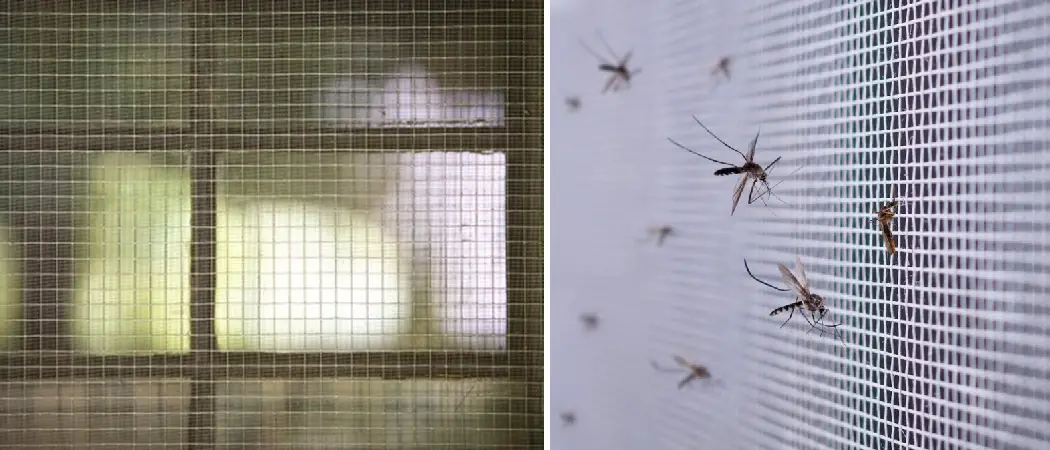Do the pesky little gnats that keep coming through your screens drive you crazy? Are you tired of swatting them away or noticing them buzzing around inside your home? You’re not alone. Gnats can be annoying, and, unfortunately, they seem to make their way in easily when we open doors and windows for fresh air–through traditional screens.
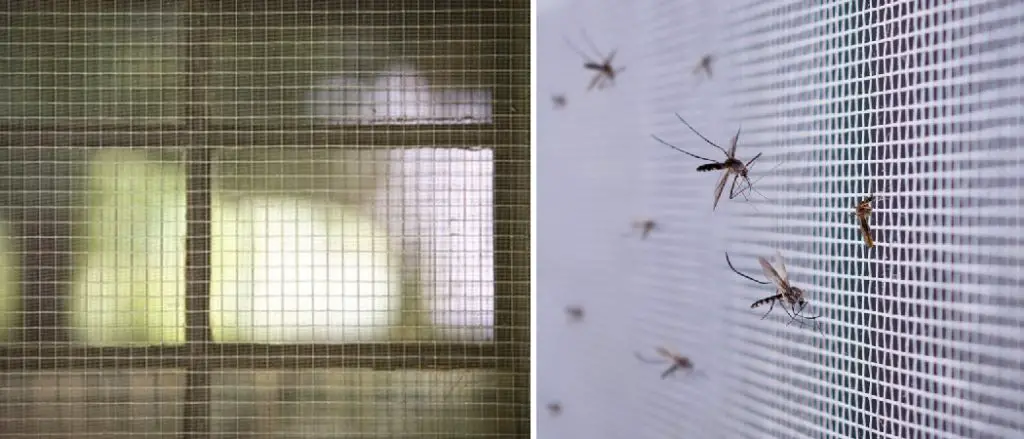
But it’s possible to put a stop to those unwelcome visitors without having to choose between a stuffy house with no ventilation or an indoor population of flying insect intruders!
In this blog post, we’ll cover how screen mesh technology is now advanced enough that there are products specifically designed to keep even tiny gnats from penetrating through the openings–so you don’t have to worry about one more thing while trying to enjoy the summertime weather in peace. Keep on reading to learn more about how to keep gnats from coming through screen.
Reasons for the Gnat Invasion
Before we dive into the solutions, let’s take a look at why gnats might be drawn to our homes in the first place. If you notice an uptick in gnat activity during certain times of the year or under particular weather conditions, it could be due to changes in their breeding and feeding patterns.
Warm, humid weather can lead to an increase in gnat populations, as well as overripe fruits and vegetables–which gnats love to feed on. Rotting organic matter such as compost or even damp soil can also attract gnats.
Traditional Screens vs Gnat-Proof Screens
Now that we know some of the potential reasons why gnats might be making their way into our homes let’s explore how traditional screens fare when it comes to keeping these pesky insects out.
Traditional screens are designed to allow airflow while keeping larger insects and debris from entering the home. However, they are not specifically designed to keep out tiny gnats. While traditional screens may work well for larger pests, gnats can easily slip through the openings in the mesh due to their small size.
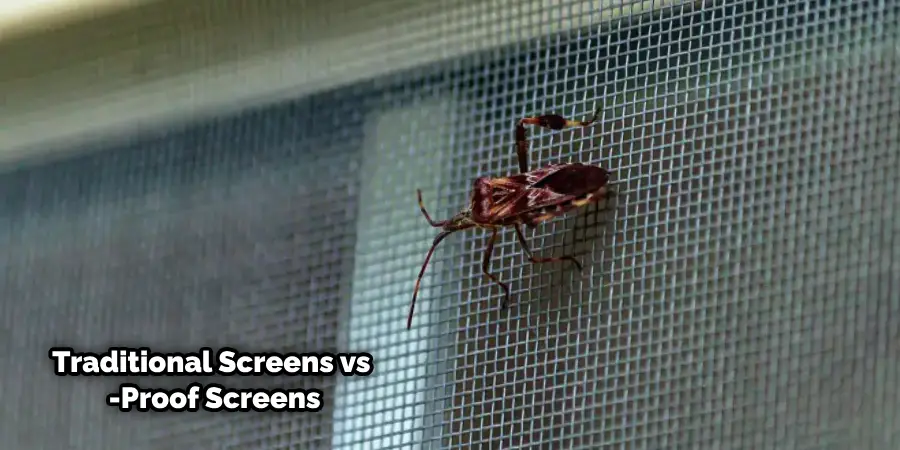
On the other hand, gnat-proof screens are specially designed to prevent even the smallest insects from getting through. This is achieved by using a tighter mesh weave that not only keeps gnats out but also works for other small pests such as no-see-ums and fruit flies.
How to Keep Gnats from Coming Through Screen: Gnat-Proof Screens Tips
Gnat-proof screens work by utilizing advanced technology in the construction of the mesh, making it nearly impossible for gnats to penetrate. But aside from choosing a gnat-proof screen, here are some additional tips to keep your home gnat-free:
1. Regularly Clean Your Screens
One of the easiest ways for gnats to penetrate through screens is by taking advantage of any gaps or tears in the mesh. By regularly cleaning your screens and checking for any damage, you can ensure that there are no openings for gnats to slip through.
2. Fix Any Tears or Holes in The Screen Promptly
If you do come across any tears or holes in your screens, make sure to fix them as soon as possible. This may involve patching up the hole or replacing the entire screen if the damage is extensive.
3. Use Natural Gnat Repellents
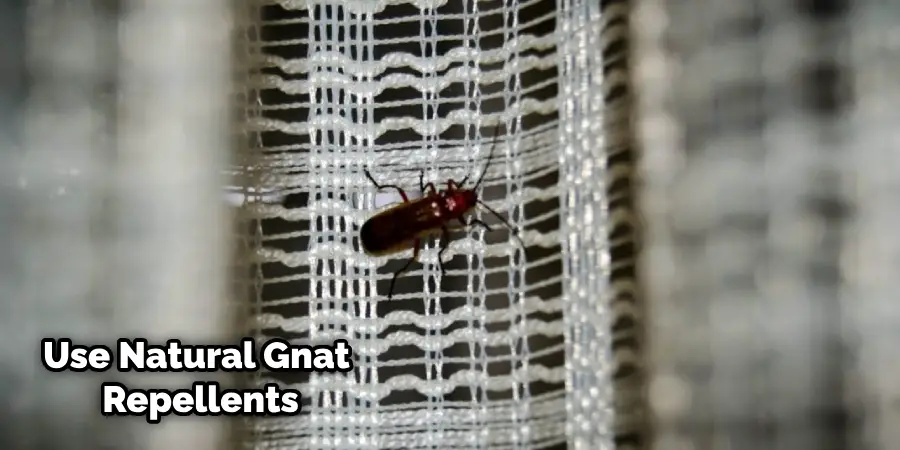
There are several natural gnat repellents that you can use around your home to deter these insects from coming inside. Some options include essential oils like eucalyptus, peppermint, and lavender, as well as herbs like basil, rosemary, and sage.
4. Keep Your Home Clean and Tidy
Gnats are attracted to food waste and other organic matter found in our homes. By keeping your home clean and free of any potential food sources for gnats, you can reduce their attraction to your living space.
5. Utilize Fans
Gnats are weak fliers and do not like wind or air currents. By using fans indoors near doorways and windows, you can create a barrier that makes it difficult for gnats to enter your home.
6. Install Gnat Traps
There are commercially available gnat traps that use special lures to attract gnats and trap them effectively. These can be placed near windows or in areas where you notice a lot of gnat activity.
7. Seal Any Potential Entry Points
Aside from screens, there may be other ways for gnats to enter your home, such as around pipes, vents, or gaps in doors and windows. By sealing these potential entry points, you can further reduce the chances of gnats finding their way inside.
8. Screen Your Doors and Windows
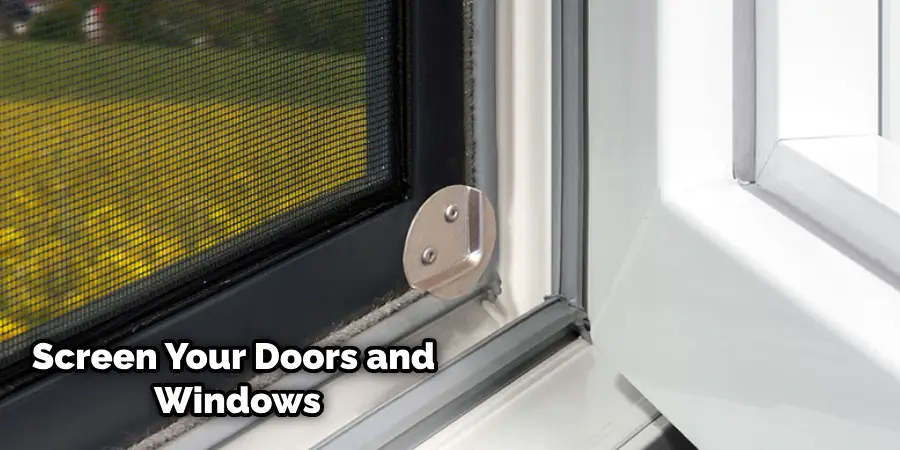
In addition to screens on windows, it may be useful also to screen your doors to ensure that gnats cannot enter when they are open for ventilation. This is especially helpful if you have a door leading directly outside your kitchen or other areas where there may be food sources for gnats.
9. Consider Adding a Patio Screen Enclosure
If you have an outdoor patio or porch that you like to use in the warmer months, consider adding a screen enclosure to keep gnats and other insects at bay. This way, you can enjoy the fresh air without worrying about any unwanted visitors.
The Combined Effectiveness of Gnat-Proof Screens, Traps, and Natural Repellents
Utilizing a combination of gnat-proof screens, traps, and natural repellents can offer a highly effective solution against gnat invasions in your home. Gnat-proof screens, with their fine mesh weave, act as the primary line of defense, preventing the entry of these tiny intruders.
Meanwhile, gnat traps attract and capture gnats that have already made their way inside, efficiently reducing the indoor population. These traps use special lures, often mimicking the scent of rotting fruit or other attractive odors, making them irresistible to gnats.
Natural repellents, such as essential oils and herbs, add another layer of protection. Their strong scents are often disliked by gnats and can deter them from entering your space.
By combining these methods, you can create a comprehensive solution that addresses both prevention and control. This multi-faceted approach increases the overall effectiveness and provides a more secure, gnat-free environment in your home.
How to Properly Maintain and Clean Gnat-Proof Screens for Long-Term Effectiveness
1. Regularly Inspect for Damage
Make it a habit to inspect your gnat-proof screens for any damage or tears regularly. This can help catch any issues early on and prevent them from worsening.
2. Clean Screens with Mild Soap and Water
To maintain the effectiveness of your screens, clean them regularly with a mild soap and water solution. Avoid using harsh chemicals, as they can damage the mesh and compromise its integrity.
3. Replace Screens When Necessary
If you notice significant damage to your screens, replace them. Gnat-proof screens are designed to last for several years, but their lifespan may vary depending on usage and exposure to weather elements.
4. Keep Screens Free of Debris
Debris, such as leaves and twigs, can clog the mesh of your screens and reduce their effectiveness. Make sure to regularly remove any debris from the screen’s surface to ensure proper airflow.
5. Store Screens Properly During Winter Months
During the colder months when screens are not in use, make sure to store them properly. This may involve rolling them up and storing them in a dry, protected area to prevent any damage.
By properly maintaining and cleaning your gnat-proof screens, you can ensure their long-term effectiveness and keep your home protected from gnats for years to come.
Tips on How to Identify and Eliminate Potential Breeding Grounds for Gnats Around the Home
1. Look for Standing Water
Standing water is a breeding ground for gnats, as it provides the perfect environment for their larvae to develop and grow. Be sure to regularly check areas around your home where water may accumulate, such as in plant saucers, gutters, or even pet bowls.
2. Dispose of Overripe Fruits and Vegetables
Gnats are attracted to overripe fruits and vegetables, as they provide a food source for both adult gnats and their larvae. Make sure to dispose of any produce that is past its prime and clean up any spills or drips in your kitchen.
3. Keep Garbage Disposal Clean
Food particles may accumulate in your garbage disposal, creating an attractive environment for gnats. Be sure to clean and disinfect your garbage disposal regularly to prevent any potential breeding grounds.
4. Clean Drains
Drains can be a prime breeding ground for gnats if they need to be cleaned properly. Use a mixture of vinegar and baking soda to flush out any buildup and keep your drains clear.
5. Use Sand in Plant Saucers
If you have potted plants inside your home, consider using a layer of sand in the saucer instead of water. This will prevent any standing water and discourage gnats from laying their eggs.
By identifying and eliminating potential breeding grounds for gnats, you can significantly reduce their population and prevent future infestations.
Conclusion
In conclusion, the battle against gnats in your home is one that can be won through strategic planning and regular maintenance. The use of gnat-proof screens, traps, natural repellents, and proper hygiene practices can transform your living space into an area that’s unfavorable for gnats.
Remember, preventing gnats from coming through screens is a matter of constant vigilance. Regularly inspect, clean, and, if necessary, replace your screens. Also, be proactive about eliminating potential breeding grounds, like standing water or overripe fruits.
With these measures in place, you can enjoy a gnat-free environment, knowing that you’ve taken significant steps to keep gnats from coming through screens and disturbing your peace. Thanks for reading this article about how to keep gnats from coming through screen.

